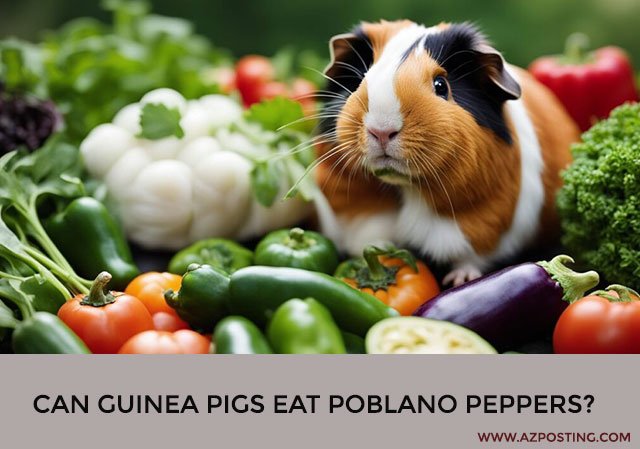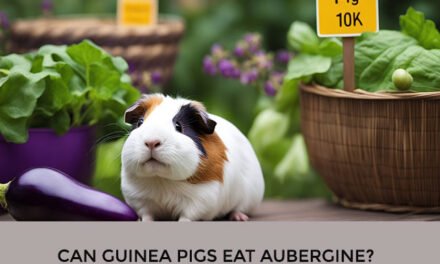Guinea pigs are known for their love of fresh vegetables and fruits, but not all foods are suitable for their consumption. One question that often comes up is whether guinea pigs can eat poblano peppers. Poblano peppers are a type of chili pepper that is commonly used in Mexican cuisine. They are mild in heat and have a rich, earthy flavor.
The answer to whether guinea pigs can eat poblano peppers is yes, they can. Poblano peppers are safe for guinea pigs to eat in moderation, as long as they are properly prepared. However, it’s important to note that not all guinea pigs will enjoy the taste of poblano peppers, and some may even have an adverse reaction to them. As with any new food, it’s best to introduce poblano peppers to your guinea pig’s diet slowly and in small quantities.
Guinea Pigs Dietary Basics
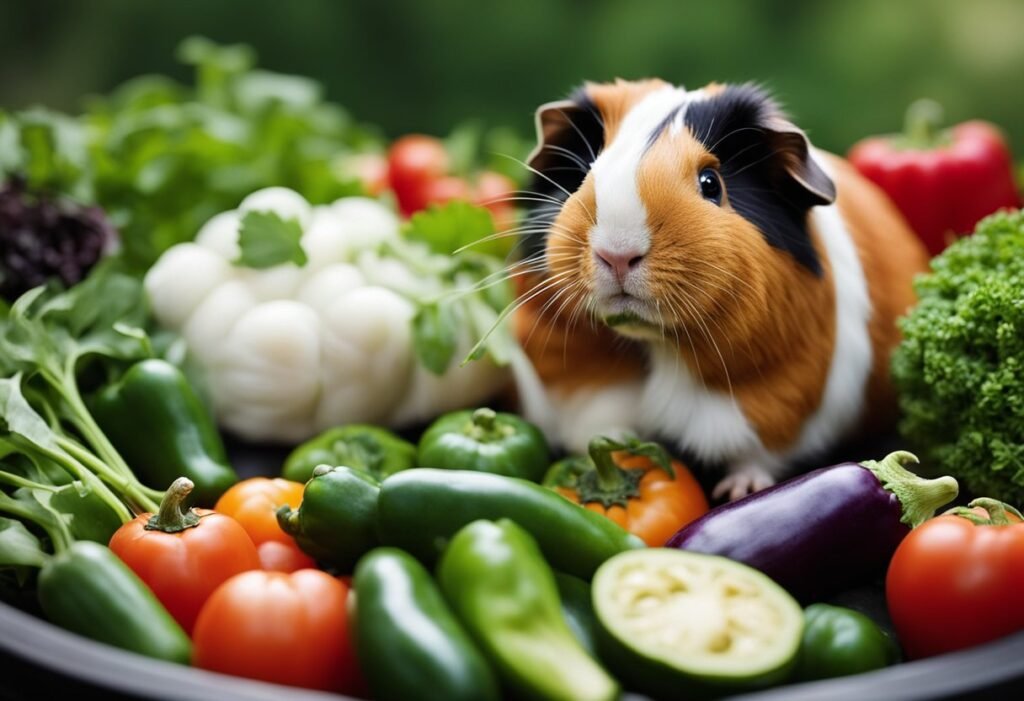
Nutritional Needs
As responsible pet owners, it’s important to understand the nutritional needs of our guinea pigs. Guinea pigs are herbivores and require a diet that is rich in fiber, vitamin C, and low in fat. They cannot produce their own vitamin C, so it’s crucial that they receive it through their diet. It’s recommended that guinea pigs receive at least 20-30 mg of vitamin C daily.
Safe Foods for Guinea Pigs
When it comes to feeding our guinea pigs, it’s important to choose safe and healthy options. Guinea pigs can eat a variety of fruits and vegetables, including leafy greens, carrots, cucumbers, and bell peppers. It’s important to introduce new foods slowly to avoid upsetting their digestive system.
Here is a list of safe foods for guinea pigs:
- Leafy greens (romaine lettuce, spinach, kale)
- Carrots
- Cucumbers
- Bell peppers (red, green, yellow)
- Broccoli
- Strawberries
- Blueberries
Foods to Avoid
While there are many safe food options for guinea pigs, there are also some foods that should be avoided. These foods can be harmful to their health and should not be given to them.
Here is a list of foods to avoid:
- Chocolate
- Avocado
- Onions
- Garlic
- Potato
- Rhubarb
- Tomato leaves
- Seeds and pits (apple seeds, cherry pits)
By understanding the nutritional needs of our guinea pigs and choosing safe and healthy food options, we can ensure that our furry friends stay happy and healthy.
Poblano Peppers Nutritional Profile
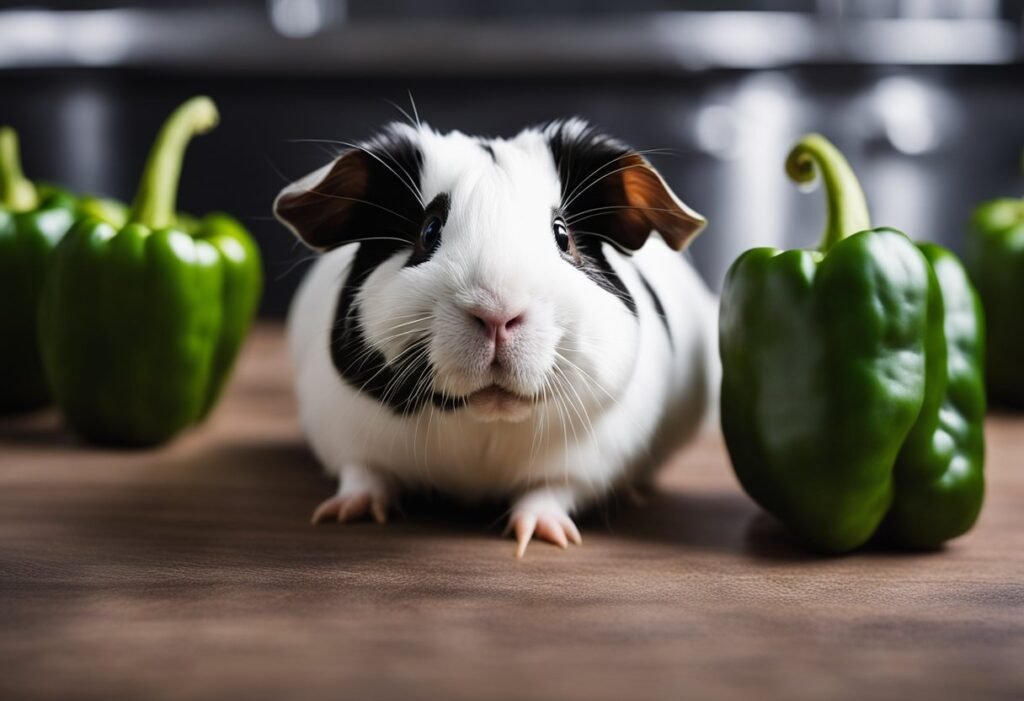
Poblano peppers are a type of chili pepper that is commonly used in Mexican cuisine. They are mild in flavor and are often roasted and stuffed with various fillings. In this section, we will discuss the nutritional profile of poblano peppers.
Vitamin Content
Poblano peppers are a good source of various vitamins. One medium-sized poblano pepper (about 2.5 ounces) contains approximately:
- Vitamin C: 54% of the recommended daily intake (RDI)
- Vitamin B6: 8% of the RDI
- Vitamin A: 4% of the RDI
Vitamin C is a powerful antioxidant that helps protect cells from damage caused by free radicals. It also plays a crucial role in collagen synthesis, which is important for maintaining healthy skin, bones, and connective tissue. Vitamin B6 is essential for proper brain development and function, as well as for the synthesis of neurotransmitters. Vitamin A is important for maintaining healthy vision, skin, and immune function.
Mineral Content
Poblano peppers are also a good source of minerals. One medium-sized poblano pepper contains approximately:
- Potassium: 6% of the RDI
- Iron: 2% of the RDI
- Magnesium: 2% of the RDI
Potassium is important for maintaining proper fluid balance in the body, as well as for regulating blood pressure. Iron is essential for the production of hemoglobin, which is responsible for carrying oxygen in the blood. Magnesium is important for maintaining healthy bones, muscles, and nerves.
Caloric Value
One medium-sized poblano pepper contains approximately 18 calories. This makes them a low-calorie food that can be a good addition to a healthy diet. They are also low in fat and sodium, which makes them a good choice for those who are trying to lose weight or maintain a healthy weight.
In conclusion, poblano peppers are a nutritious and flavorful addition to any diet. They are a good source of various vitamins and minerals, and are low in calories, fat, and sodium.
Health Benefits of Poblano Peppers for Guinea Pigs
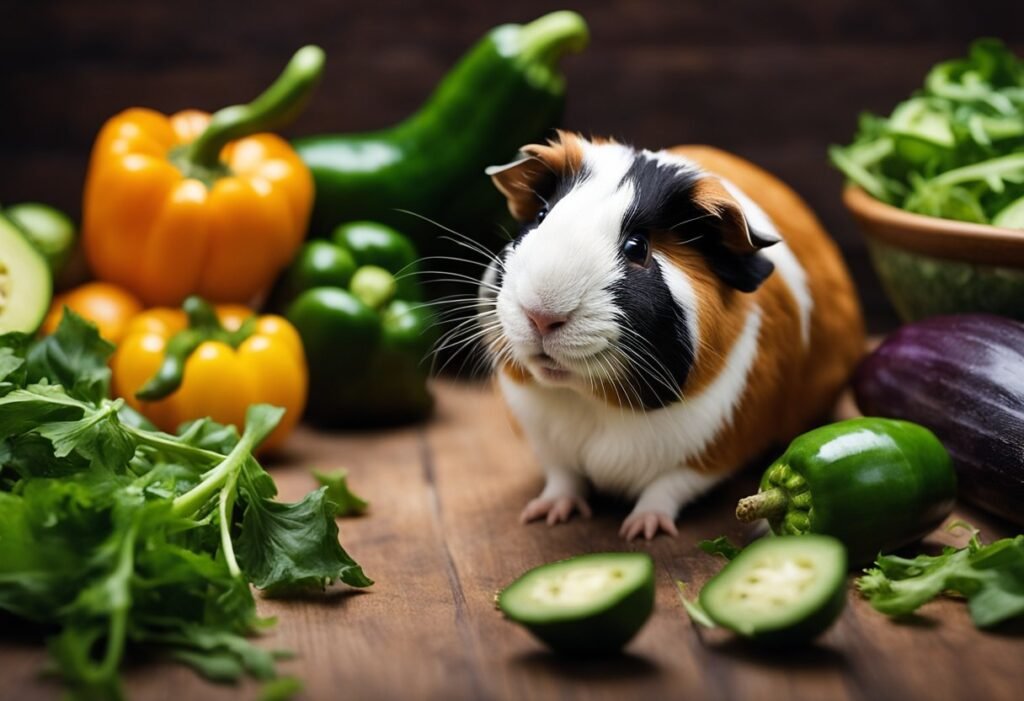
Poblano peppers are a type of chili pepper that is commonly used in Mexican cuisine. They are a great source of vitamins and minerals that can benefit the health of your guinea pig. In this section, we will discuss the health benefits of poblano peppers for guinea pigs.
Digestive Health
Poblano peppers are rich in dietary fiber, which is essential for maintaining good digestive health in guinea pigs. Fiber helps to promote the growth of beneficial bacteria in the gut, which aids in digestion and prevents the buildup of harmful bacteria.
Additionally, the high water content of poblano peppers can help to prevent constipation in guinea pigs. Constipation can lead to serious health problems in guinea pigs, so it is important to ensure that their diet includes foods that are high in water and fiber.
Immune System Support
Poblano peppers are a rich source of vitamin C, which is essential for maintaining a healthy immune system in guinea pigs. Vitamin C helps to boost the production of white blood cells, which are responsible for fighting off infections and diseases.
Furthermore, the antioxidants found in poblano peppers can help to protect your guinea pig’s cells from damage caused by free radicals. Free radicals are unstable molecules that can cause oxidative stress and contribute to the development of chronic diseases.
In conclusion, poblano peppers can be a healthy addition to your guinea pig’s diet. However, it is important to introduce new foods gradually and in small amounts to avoid digestive upset. Always consult with your veterinarian before making any changes to your guinea pig’s diet.
Potential Risks of Feeding Poblano Peppers to Guinea Pigs
When it comes to feeding guinea pigs, it’s important to make sure that their diet is balanced and nutritious. While some fruits and vegetables are safe for guinea pigs to eat, others can be harmful and even toxic. In this section, we’ll discuss the potential risks of feeding poblano peppers to guinea pigs.
Spicy Food Concerns
Poblano peppers are known for their mild to medium heat level, but even this level of spiciness can be harmful to guinea pigs. Guinea pigs have a sensitive digestive system, and spicy foods can cause digestive upset, diarrhea, and even dehydration. Therefore, it’s best to avoid feeding poblano peppers or any other spicy foods to guinea pigs.
Oxalates and Bladder Stones
Another concern when it comes to feeding poblano peppers to guinea pigs is the presence of oxalates. Oxalates are naturally occurring compounds found in many fruits and vegetables, including poblano peppers. In high amounts, oxalates can contribute to the formation of bladder stones in guinea pigs, which can be painful and even life-threatening. Therefore, it’s important to limit the amount of oxalate-rich foods in a guinea pig’s diet, including poblano peppers.
Allergic Reactions
Just like humans, guinea pigs can have allergic reactions to certain foods. While poblano peppers are not a common allergen, it’s still possible for a guinea pig to have an allergic reaction to them. Symptoms of an allergic reaction can include itching, swelling, and difficulty breathing. If you notice any of these symptoms after feeding your guinea pig poblano peppers, it’s important to stop feeding them immediately and consult with a veterinarian.
In summary, while poblano peppers may seem like a healthy treat for guinea pigs, they can actually pose several potential risks. Spicy food concerns, oxalates and bladder stones, and allergic reactions are all reasons to avoid feeding poblano peppers to guinea pigs. Instead, focus on feeding your guinea pig a balanced diet of hay, pellets, and fresh fruits and vegetables that are safe for them to eat.
Feeding Guidelines for Poblano Peppers
When it comes to feeding your guinea pig, it’s important to ensure that you are providing them with a balanced diet that meets their nutritional needs. While poblano peppers can be a tasty addition to your guinea pig’s diet, it’s important to feed them in moderation and follow some basic guidelines.
Portion Control
As with any new food, it’s important to introduce poblano peppers gradually to your guinea pig’s diet. Start by offering a small amount and monitor their reaction. If they seem to enjoy the peppers and tolerate them well, you can gradually increase the portion size.
It’s important to note that while poblano peppers are a healthy addition to your guinea pig’s diet, they should still be fed in moderation. Too much of any food can cause digestive upset and lead to health issues.
Frequency of Feeding
In general, it’s recommended to offer fresh vegetables to your guinea pig daily. However, it’s important to rotate the types of vegetables you offer to ensure that your guinea pig is getting a variety of nutrients.
When it comes to feeding poblano peppers specifically, we recommend offering them 1-2 times per week as a treat or supplement to their regular diet. This will help to ensure that they are getting the nutrients they need without overloading them with too much of any one food.
Overall, poblano peppers can be a healthy and tasty addition to your guinea pig’s diet when fed in moderation. As always, it’s important to monitor your guinea pig’s reaction to any new food and consult with a veterinarian if you have any concerns about their diet.
Alternatives to Poblano Peppers
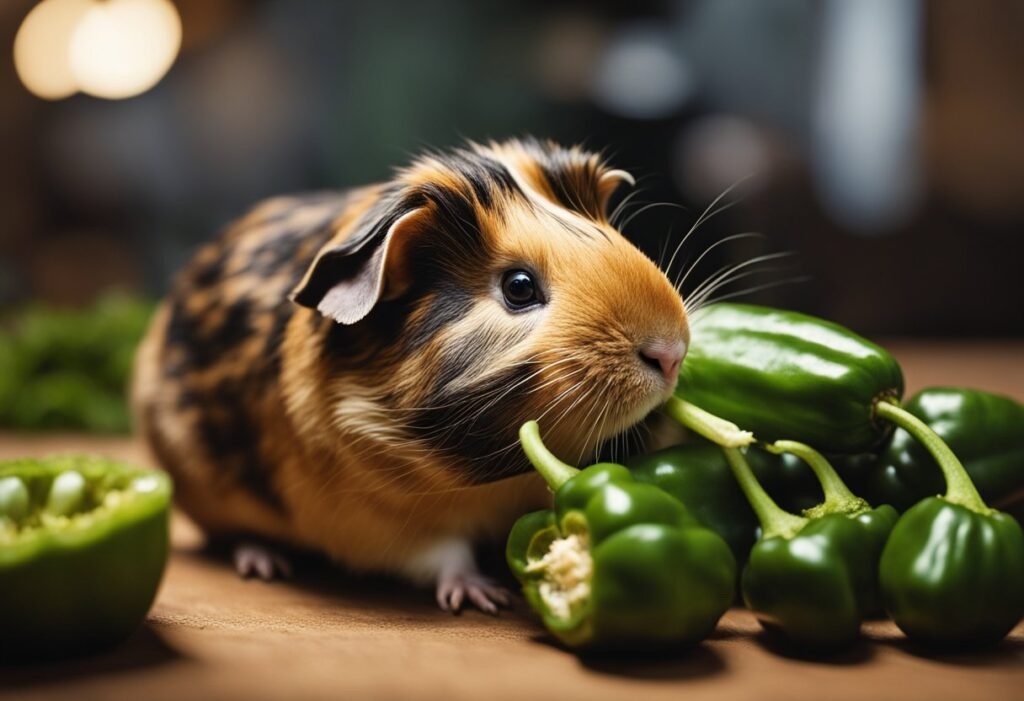
Bell Peppers
If you’re looking for a similar flavor to poblano peppers, bell peppers are a great alternative. Bell peppers come in a variety of colors, including green, red, yellow, and orange. They have a mild, sweet flavor and are rich in vitamin C, making them a healthy addition to your guinea pig’s diet.
When feeding bell peppers to your guinea pig, it’s important to remember to remove the seeds and stem. Also, be sure to wash the peppers thoroughly before serving them to your pet.
Other Safe Vegetables
There are plenty of other vegetables that are safe for guinea pigs to eat. Some examples include:
- Carrots
- Cucumber
- Zucchini
- Broccoli
- Kale
- Spinach
When feeding your guinea pig vegetables, it’s important to introduce them slowly and in small amounts. This will help prevent digestive upset. It’s also important to remember that vegetables should be given as a supplement to your guinea pig’s regular diet of hay and pellets.
In conclusion, while poblano peppers are not recommended for guinea pigs, there are plenty of safe and tasty alternatives available. By incorporating a variety of vegetables into your guinea pig’s diet, you can help ensure that they receive all of the nutrients they need to stay healthy and happy.
Frequently Asked Questions
Are spicy foods like poblano peppers safe for guinea pigs to consume?
No, spicy foods like poblano peppers are not safe for guinea pigs to consume. These types of peppers can cause gastrointestinal problems and discomfort for guinea pigs. It is best to avoid feeding spicy foods to guinea pigs altogether.
Is it okay for guinea pigs to eat the seeds of peppers?
No, it is not okay for guinea pigs to eat the seeds of peppers. Pepper seeds can be a choking hazard for guinea pigs, and they can also cause digestive problems. It is best to remove the seeds before feeding peppers to guinea pigs.
How often can guinea pigs safely eat bell peppers?
Guinea pigs can safely eat bell peppers as part of their regular diet. However, it is important to feed them in moderation. A good rule of thumb is to feed guinea pigs a small amount of bell peppers once or twice a week.
Can guinea pig diets include the stalks of peppers?
Yes, guinea pig diets can include the stalks of peppers. The stalks are safe for guinea pigs to eat and can provide additional nutrients. However, it is important to remove any thorns or prickly parts from the stalks before feeding them to guinea pigs.
Are the leaves of bell peppers harmful to guinea pigs?
No, the leaves of bell peppers are not harmful to guinea pigs. They are safe for guinea pigs to eat and can provide additional nutrients. However, it is important to wash the leaves thoroughly before feeding them to guinea pigs.
Is it safe for guinea pigs to eat various types of peppers, such as sweet mini or green peppers?
Yes, guinea pigs can safely eat various types of peppers, such as sweet mini or green peppers. However, it is important to feed them in moderation and remove any seeds or stems before feeding. It is also important to introduce new foods to guinea pigs gradually to avoid any digestive upset.

